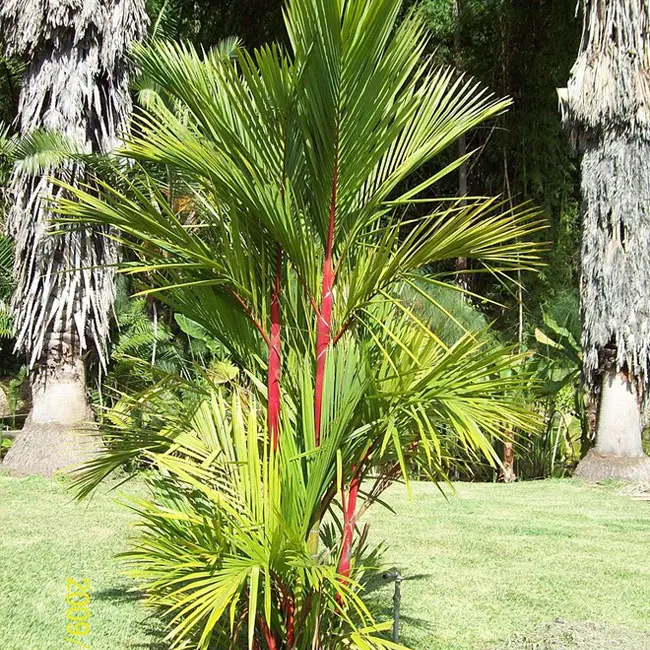
The Lipstick Palm Tree, scientifically known as Cyrtostachys renda, is often regarded as rare and exotic due to the extended time required for its seeds to germinate and its relatively limited availability.
This palm is native to the rainforests of Southeast Asia, including regions in Malaysia, Thailand, and Indonesia.
Cultivating the sealing wax palm can be a bit challenging, as it demands high humidity, abundant water, and is not tolerant of drought or strong winds. This palm is undoubtedly a collector’s treasure and is renowned as one of the most captivating and sought-after palm species worldwide.
Personally, the Lipstick Palm stands as one of my favorite palm trees. Its striking red crownshaft creates a captivating contrast with its vibrant, lush green fronds. I believe it’s a must-have addition to any tropical garden.
Quick Facts:
| Scientific name: | Cyrtostachys renda |
| Common names: | Lipstick Palm, Sealing Wax Palm, Rajah Palm, and Red Sealing Wax Palm. |
| Origin: | Native to Malaysia and the island of Sumatra. |
| Growth Rate: | Slow to Moderate. Up to 10 – 20 ft tall and 1-5 ft wide. In the wild it can get up to 50ft tall. |
| Cold Tolerance: | USDA Zones 10b (35 to 40 F) to 11 (above 40 F) |
| Light Req: | Partial shade to Full sun. |
| Water Req: | High. |
| Soil Req: | Widely adaptable. |
| Fruit: | Yes. |
| Propagation: | By seed germinating in 2-4 months. |
Identifying Characteristics of the Lipstick Palm
The trunks of the Lipstick Palm share some characteristics with the Bamboo Palm. These palms are distinguished by their slender, smooth trunks, which exhibit a slight swelling at the base.
The pinnate, or feather-like, dark green leaves grow primarily upward, reaching lengths of up to 2 feet. These stiff leaves feature around 50 slender leaflets, each measuring 18 inches in length.
Flowers and Fruits of the Lipstick Palm
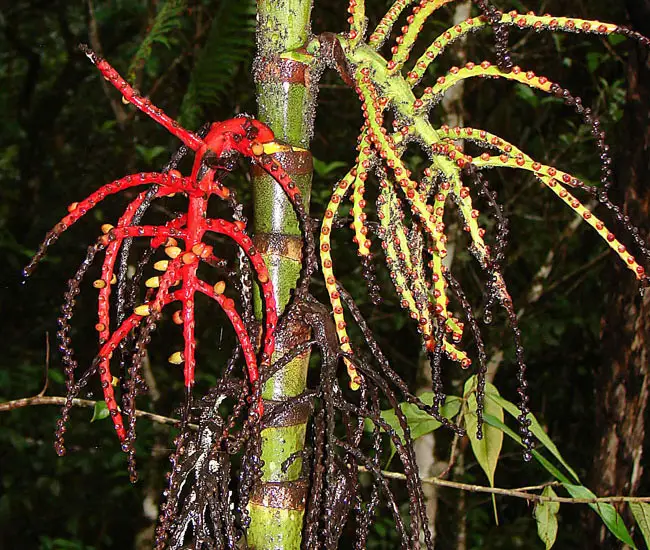
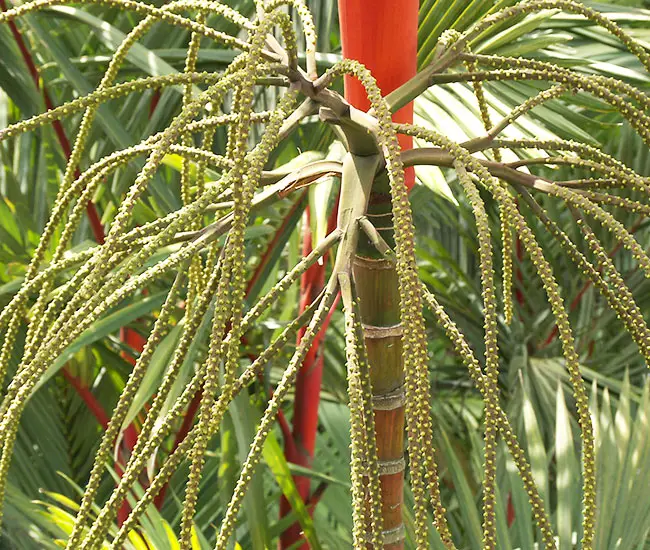
Greenish flowers appear on long stalks extending from below the crownshaft of the Lipstick Palm. Remarkably, both male and female flowers are found on the same inflorescence.
These flowers are succeeded by small, shiny fruits that turn black when ripe. The fruits are approximately 1 inch in length and oval in shape, containing a single seed. It’s worth noting that the fruit of the Lipstick Palm is not edible.
Caring for the Lipstick Palm
Cyrtostachys renda typically boasts multiple slender trunks that cluster together and can reach heights of 10-20 feet, with wild specimens occasionally reaching up to 50 feet in their natural habitat.
However, it’s important to recognize that this palm is not particularly hardy and can only endure brief temperature drops down to 35°F. Ideally, it thrives in year-round temperatures ranging from 75-85°F.
Suitable for USDA Zones 10b (with temperatures between 35 to 40°F) to 11 (above 40°F), it accommodates both partial shade and full sun.
Naturally thriving in swampy environments, Lipstick Palms display remarkable tolerance to flooding and can even be grown in standing water. While they prefer rich, moist, loamy soils, they can adapt to various well-drained soil types. However, they do not fare well under drought conditions.
To maintain their health and prevent nutritional deficiencies, it is advisable to apply high-quality palm fertilizer with a continuous-release formula twice a year during the growing season. Fortunately, Lipstick Palms do not encounter significant issues with pests or diseases.
The propagation of the Lipstick Palm is primarily achieved through seeds, but it’s important to note that these seeds germinate quite slowly. Fresh seeds tend to germinate more quickly, but even then, it may take 2-4 months for them to sprout.
Young plants remain small, often only a few inches tall, for approximately three years before they begin to grow more steadily.
Lipstick Palm Pictures
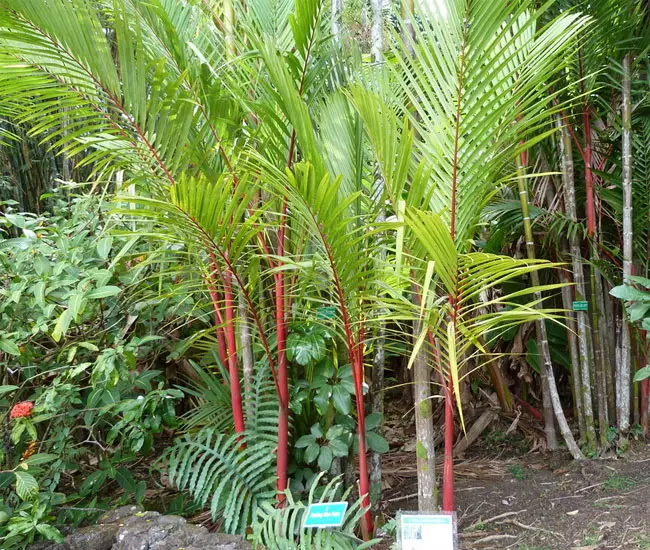
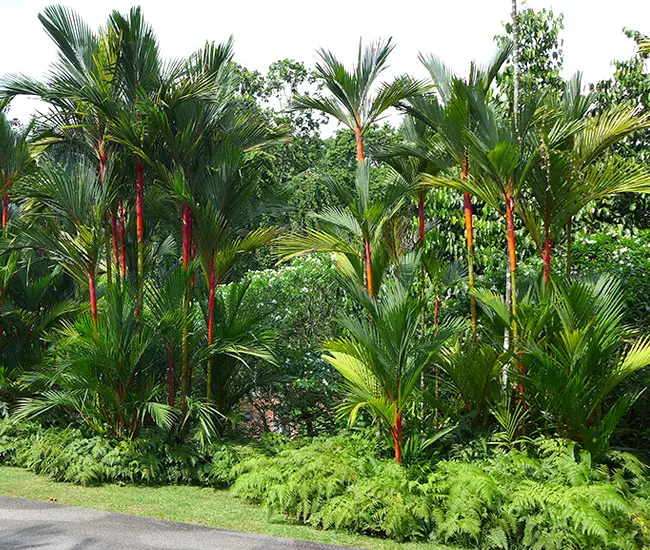
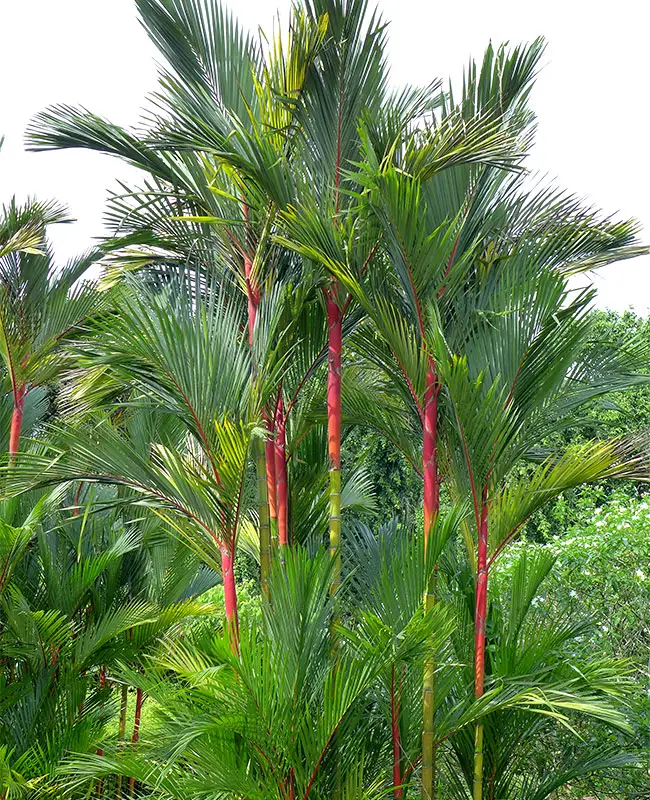
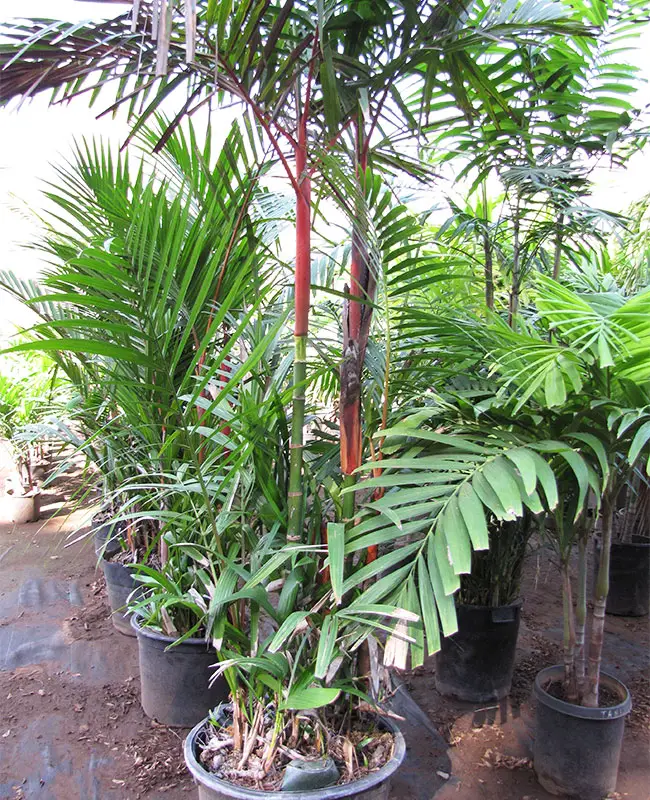
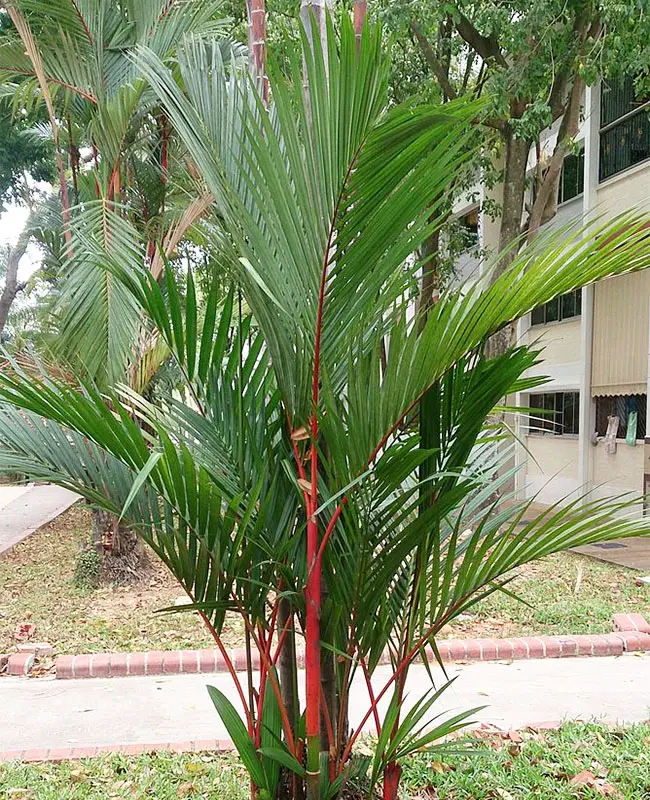
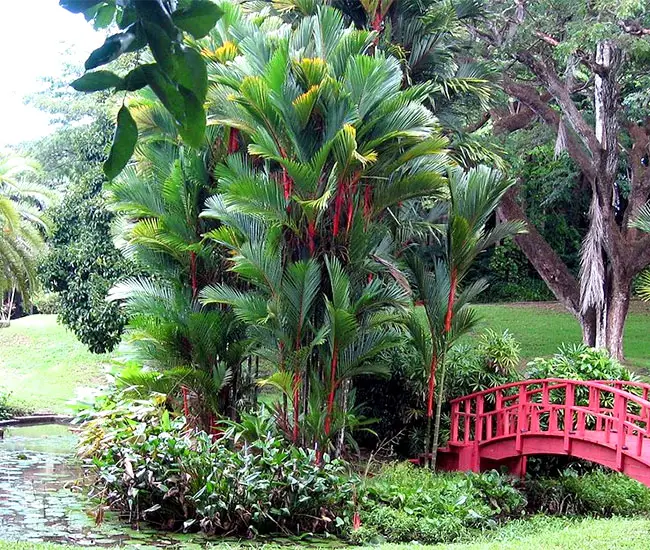
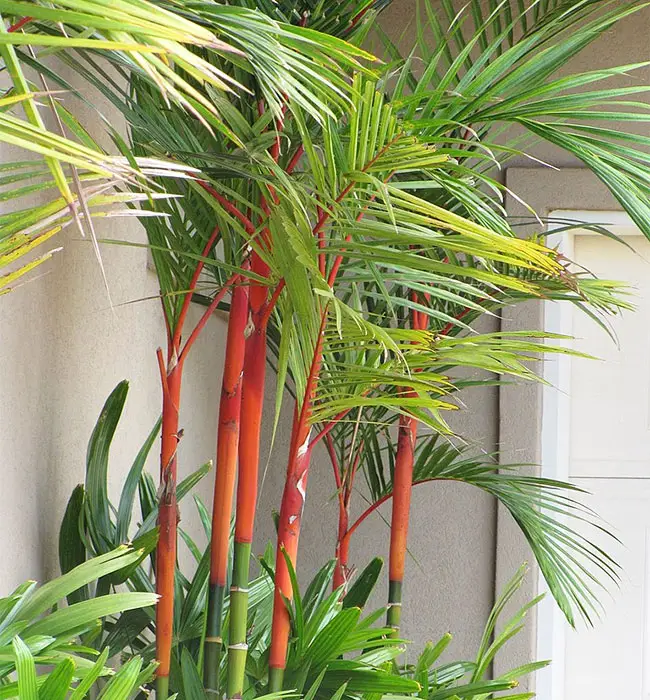
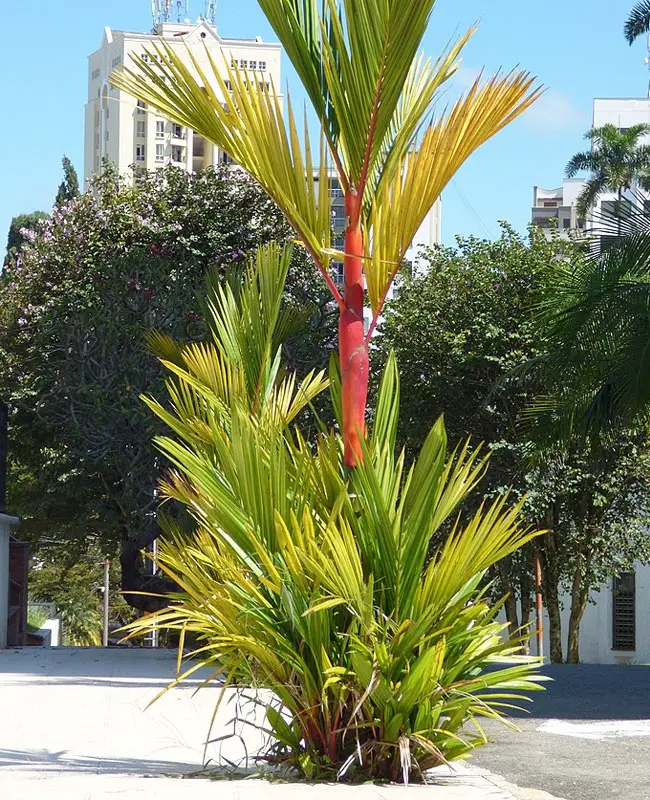
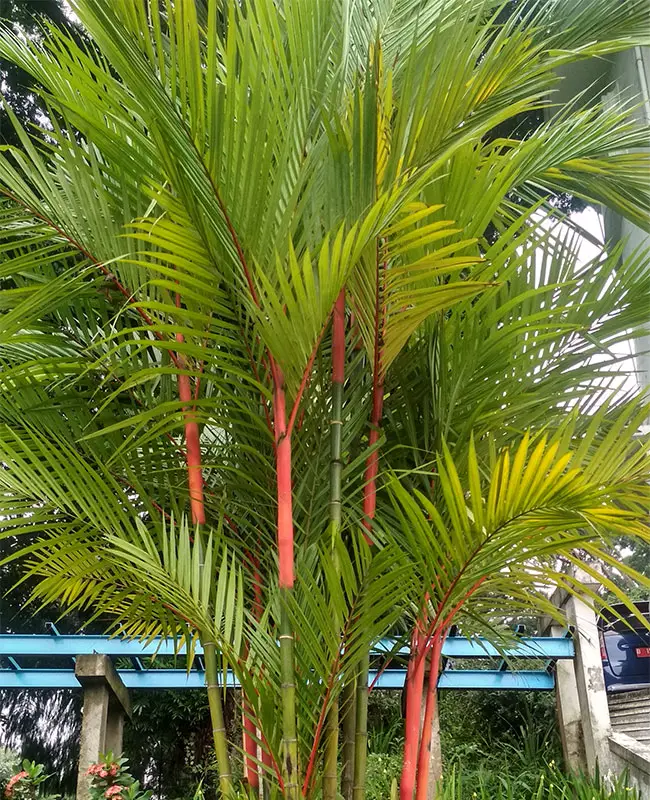
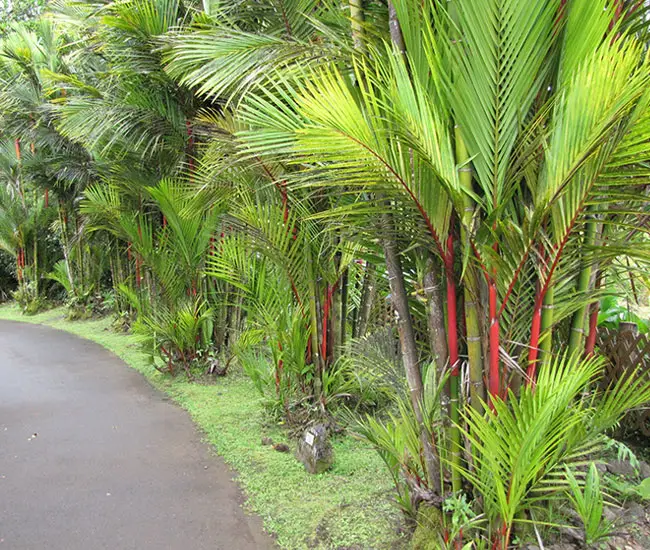
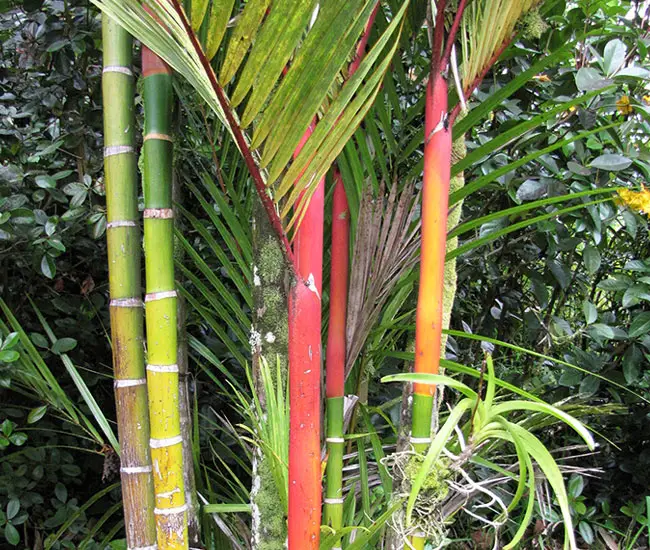

Love the red palm tree, so expensive. Is there a small one at a lower price?
Where can I get catalogs to order palms that they will ship to south Alabama ( the gulf Coast ) ?
Thank You PALM CRAZY
Nancy Wilkerson
Great article on growing Lipstick Palms. Your are correct about arrested growth for the first 3 years. By Dr. Gregg L. Friedman MD
Hi
I am about to visit my son in Sunnyvale CA. I am interested in several young seedlings of the cold tolerant lipstick palms to take back home.I will not mind at all if your seedling art smaller that the size you usually offer them for sale.How can you help me and what size are currently the seedlings?
Best regards,
Simcha
Excellent article on Lipstick Palms. I agree, they like a lot of water. I move mine indoors anytime the temperature goes below 58 degrees. They cannot handle any cold weather. By Gregg L. Friedman MD
Hello,
I’m trying to grow a couple of these palm trees outdoor here in Dubai, I managed to buy 4 of them with a 2m height, unfortunately in July-Aug the temperature went up to 45C (113 F) and despite watering everyday apparently the trees are not surviving, drying out an scorching. Any idea if this is normal? Is it worth trying again or is it hopeless?
Thanks
Are lipstick palms salt tolerant?